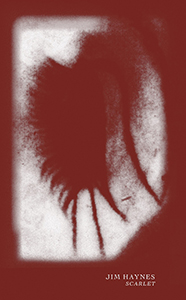 As a sound artist, I have always felt Jim Haynes is criminally underappreciated. His work always resonates with me as an intricate, dense matrix of processed and found sounds, always with some organic, natural elements, but demolished and treated to bear no resemblance to their origin. Like his visual work, Haynes captures that powerful sense of rust and decay on Scarlet, culled from electromagnetic and organic sources, and shaped into a dizzying but beautifully bleak cassette.
As a sound artist, I have always felt Jim Haynes is criminally underappreciated. His work always resonates with me as an intricate, dense matrix of processed and found sounds, always with some organic, natural elements, but demolished and treated to bear no resemblance to their origin. Like his visual work, Haynes captures that powerful sense of rust and decay on Scarlet, culled from electromagnetic and organic sources, and shaped into a dizzying but beautifully bleak cassette.
Split into eight different pieces, four on each side of the tape, Scarlet feels more like a mammoth work in two distinct parts, with each half sounding especially dynamic and constantly evolving.Haynes manages to find that perfect balance in this type of work between allowing a segment to repeat appropriately enough to be fully appreciated, while never becoming too monotonous or simplistic.
One of the other reasons that Haynes' work is so good is that he does an exceptional job at balancing rhythms and dissonance.On the opening "Cerise Cerise," he mixes panned, pseudo-rhythmic loops over a sprawling electronic hum.As the pace of the loops increases and the humming electronics vary, it results in a sound that more resembles drum programming and synth melodies rather than purely deconstructed noise.
"Kazanl«ék" is another piece in which he carefully processes one of his ambiguous noises into something resembling a conventional keyboard sound, but then opened up into a ghostly, unsettling bit of dissonant tone.Just as adeptly as he created a rhythmic bit of near-music, he pulls it apart into first a blast of noise and then subtle, pensive passage of crackling."Alizarin" is another example in which he first implements a bit of rhythm, but allows it to dissolve into an ambient expanse of what could be the multifaceted hum of an air conditioning system.
Abstraction pays a more significant role in a composition such as "Venal," which is at first a collage of female voice samples but quickly transitions into passages of erratic noise explosions, culminating in a wet burst of electronics that are amongst the most aggressive I have ever heard him utilize.The lengthy "Racine to Vermillion" is a showcase for Haynes' undeniable skill at creating sonic textures that can almost be physically felt, amidst sputtering static and a windswept tundra of broken electronics.
Jim Haynes' knack for destroying and then rebuilding sounds into something completely different continues to be exceptionally abundant on Scarlet.Even beyond the specific sounds, the mood and sensibility he creates is one of post-apocalyptic decay and destruction, and the sound of a world without humans, a bleak yet amazing sculpture of sound.
samples:
 
Read More

